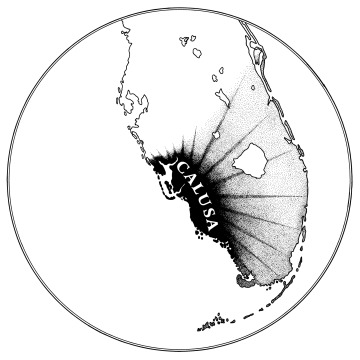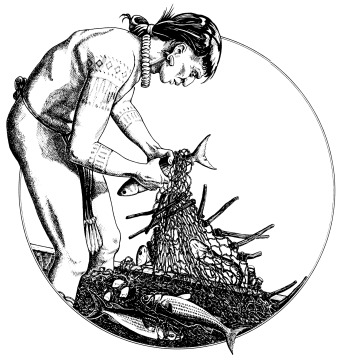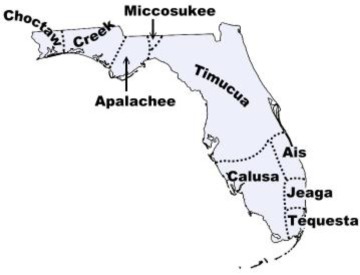2600 BC: Gulf Coast peoples make canoes and pottery for trade
As the population grows north of what is now called Fort Myers, Florida, people begin living in permanent villages. Large settlements appear in river valleys throughout the Southeast. Fishing is important to their livelihood, and villagers establish long-distance trade routes, using dugout canoes for transport. Near the Gulf of Mexico coast, they return the shells from their staple food, shellfish, to the shores, creating a white shelf of discarded shells along the beaches, which were later found by archaeologists.
- Theme
- Land and Water
- Region
- Southeast
The Calusa heartland was located near present-day Fort Myers, but the tribe's influence extended throughout southern Florida.
Courtesy Florida Museum of Natural History
Calusa prosperity relied on the bounty of the estuary—a place where fresh water flowing off land meets and mixes with salt water from the sea. One of the richest and most productive environments on earth, estuaries are often called the “cradles of the ocean” because many fish and shellfish spend all or part of their lives there.
Courtesy Florida Museum of Natural History
Locations of original Native American tribes in Florida
Courtesy Native Languages of the Americas


